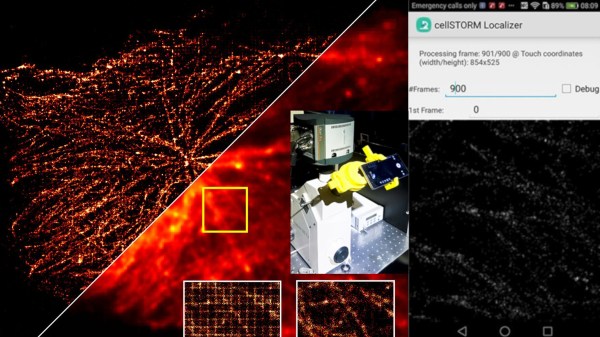Mobile phones are the photography tool for most of us, but they are a blunt tool. If you love astrophotography, you buy a DSLR and a lens adapter. Infrared photography needs camera surgery or a special unit. If you want to look closer to home, you may have a microscope with a CCD. Your pocket computer is not manufactured for microscopy, but that does not mean it cannot be convinced. Most of us have held our lens up to the eyepiece of some binoculars or a microscope, and it sort of works, but it is far from perfect. [Benedict Diederich] and a team are proving that we can get darn beautiful images with a microscope, a phone holder, and some purpose-built software on an Android phone with their cellSTORM.
The trick to getting useful images is to compare a series of pictures and figure out which pixels matter and which ones are noisy. Imagine someone shows you grainy nighttime footage from an outdoor security camera. When you pause, it looks like hot garbage, and you can’t tell the difference between a patio chair and a shrubbery. As it plays, the noisy pixels bounce around, and you figure out you’re looking at a spruce bush, and that is roughly how the software parses out a crisp image. At the cost of frame rate, you get clarity, which is why you need a phone holder. Some of their tests took minutes, so astrophotography might not fare as well.
We love high-resolution pictures of tiny things and that isn’t going to change anytime soon.
Thank you [Dr. Nicolás De Francesco] for the tip.












